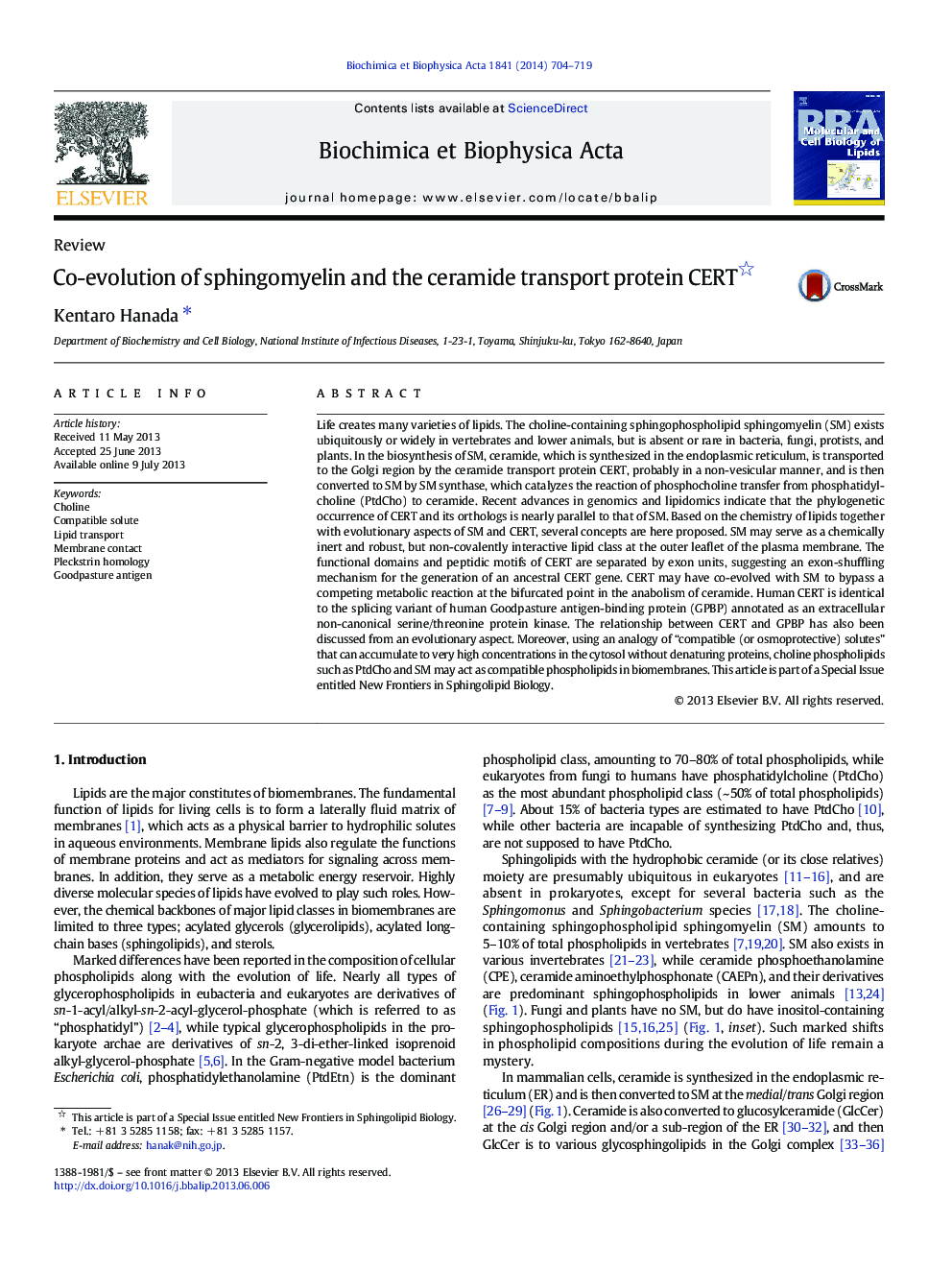| Article ID | Journal | Published Year | Pages | File Type |
|---|---|---|---|---|
| 1949225 | Biochimica et Biophysica Acta (BBA) - Molecular and Cell Biology of Lipids | 2014 | 16 Pages |
•Sphingomyelin (SM) may be a chemically inert and robust, but non-covalently interactive lipid class.•The CERT gene may have been generated by exon shuffling in a putative ancestral genome.•SM and CERT may have co-evolved to bypass a competing reaction in ceramide anabolism.•Choline phospholipids may act as compatible phospholipids.
Life creates many varieties of lipids. The choline-containing sphingophospholipid sphingomyelin (SM) exists ubiquitously or widely in vertebrates and lower animals, but is absent or rare in bacteria, fungi, protists, and plants. In the biosynthesis of SM, ceramide, which is synthesized in the endoplasmic reticulum, is transported to the Golgi region by the ceramide transport protein CERT, probably in a non-vesicular manner, and is then converted to SM by SM synthase, which catalyzes the reaction of phosphocholine transfer from phosphatidylcholine (PtdCho) to ceramide. Recent advances in genomics and lipidomics indicate that the phylogenetic occurrence of CERT and its orthologs is nearly parallel to that of SM. Based on the chemistry of lipids together with evolutionary aspects of SM and CERT, several concepts are here proposed. SM may serve as a chemically inert and robust, but non-covalently interactive lipid class at the outer leaflet of the plasma membrane. The functional domains and peptidic motifs of CERT are separated by exon units, suggesting an exon-shuffling mechanism for the generation of an ancestral CERT gene. CERT may have co-evolved with SM to bypass a competing metabolic reaction at the bifurcated point in the anabolism of ceramide. Human CERT is identical to the splicing variant of human Goodpasture antigen-binding protein (GPBP) annotated as an extracellular non-canonical serine/threonine protein kinase. The relationship between CERT and GPBP has also been discussed from an evolutionary aspect. Moreover, using an analogy of “compatible (or osmoprotective) solutes” that can accumulate to very high concentrations in the cytosol without denaturing proteins, choline phospholipids such as PtdCho and SM may act as compatible phospholipids in biomembranes. This article is part of a Special Issue entitled New Frontiers in Sphingolipid Biology.
